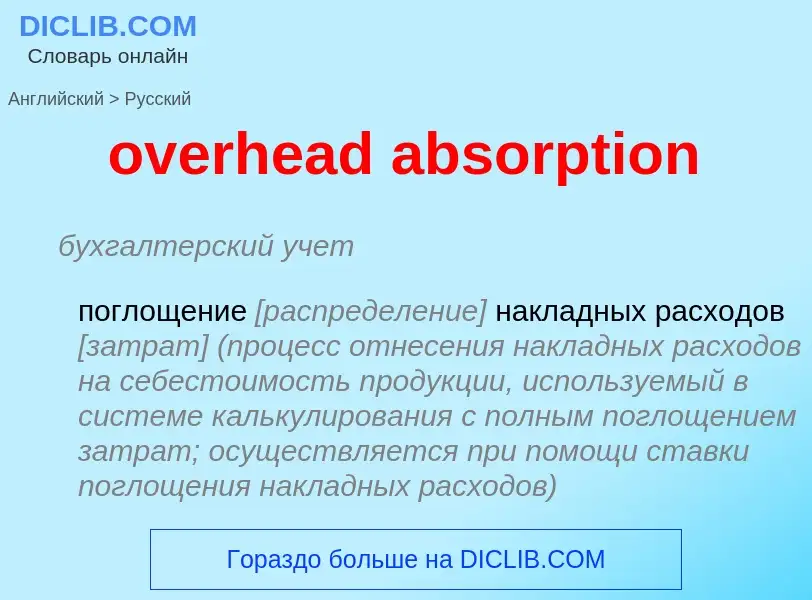Vertaling en analyse van woorden door kunstmatige intelligentie ChatGPT
Op deze pagina kunt u een gedetailleerde analyse krijgen van een woord of zin, geproduceerd met behulp van de beste kunstmatige intelligentietechnologie tot nu toe:
- hoe het woord wordt gebruikt
- gebruiksfrequentie
- het wordt vaker gebruikt in mondelinge of schriftelijke toespraken
- opties voor woordvertaling
- Gebruiksvoorbeelden (meerdere zinnen met vertaling)
- etymologie
overhead absorption - vertaling naar Engels
бухгалтерский учет
поглощение [распределение] накладных расходов [затрат] (процесс отнесения накладных расходов на себестоимость продукции, используемый в системе калькулирования с полным поглощением затрат; осуществляется при помощи ставки поглощения накладных расходов)
синоним
Смотрите также
бухгалтерский учет
накладные расходы [затраты] [издержки] (любые затраты, которые невозможно непосредственно отнести на себестоимость определенной продукции (обычно это все затраты, кроме прямых затрат труда и материалов), напр., затраты на аренду помещений, электроэнергию, канцелярские товары и другие расходы на хозяйственное обслуживание производства и управления; подразделяются на производственные накладные расходы, административные накладные расходы, накладные расходы по сбыту, накладные расходы на исследования и разработки)
косвенные затраты (в межотраслевом балансе: затраты, которые входят в данный продукт через затраты сопряженных отраслей)
синоним
Definitie
Wikipedia
In algebra, the absorption law or absorption identity is an identity linking a pair of binary operations.
Two binary operations, ¤ and ⁂, are said to be connected by the absorption law if:
- a ¤ (a ⁂ b) = a ⁂ (a ¤ b) = a.
A set equipped with two commutative and associative binary operations ("join") and ("meet") that are connected by the absorption law is called a lattice; in this case, both operations are necessarily idempotent.
Examples of lattices include Heyting algebras and Boolean algebras, in particular sets of sets with union and intersection operators, and ordered sets with min and max operations.
In classical logic, and in particular Boolean algebra, the operations OR and AND, which are also denoted by and , satisfy the lattice axioms, including the absorption law. The same is true for intuitionistic logic.
The absorption law does not hold in many other algebraic structures, such as commutative rings, e.g. the field of real numbers, relevance logics, linear logics, and substructural logics. In the last case, there is no one-to-one correspondence between the free variables of the defining pair of identities.

